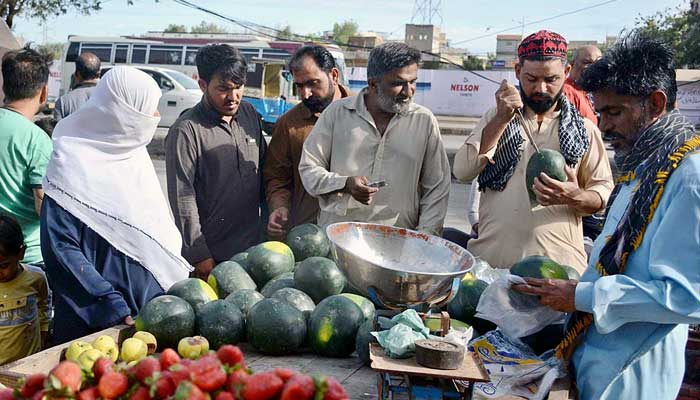PESHAWAR: With the beginning of Ramadan, prices of food items have also started skyrocketing without any check from the authorities concerned.
During a visit to markets in the capital city of Khyber Pakhtunkhwa (KP) to check and compare rates of edibles with those issued by the district administration, it was found that the prices of food items have continued to increase with each passing day in the holy month.
The price of live chicken has increased to Rs350 per kg and the price of rice increased by Rs70 per kg, said a vendor, adding that the price of rice has gone up to Rs335 per kg.
He also said that split chickpeas (chana dal) started selling at Rs220 to Rs260 per kg, while the price of beans increased by Rs60 per kg with rates jumping from Rs281 to Rs339 per kg.
The price of spices increased from Rs150 to Rs200 per kg, a shopkeeper told APP during a visit.
He shared that the price of spices in the city has reached Rs600 per kg and the cost of oil and ghee also seen a surge by Rs62 per kg, while other vegetables and fruits also now remain out of consumers’ purchasing power. Garlic is being sold at Rs360 and ginseng at Rs620 per kg. On the other hand, peas cost Rs200, Arvi Rs180, Zucchini Rs170, green capsicum Rs150 rupees and tomato Rs120 per kg.
The rates of fruits have also seen a hike. Sweet oranges are priced at Rs440 per dozen, oranges at Rs400 per dozen, banana at Rs300 per dozen, pomegranate Rs400, Iranian apple at Rs340 per kg, Kohati guava at Rs350 and strawberry costs Rs280 per kg.
The skyrocketing price hike also impacted the meat market with beef being sold for Rs700 per kg before Ramadan, but is now priced at Rs800 and Rs1,000 per kg, while the rates of mutton were increased from Rs1,400 to Rs1,600 per kg; thereby increasing to Rs1,800 per kg.
“The rates issued by the district administration do not suit us,” a butcher in the local market said.
When asked about the imposition of fines and raids from the district administration officials, he replied that most officials did not come inside the market to check rates during the recent rain due to heavy mud-stranded water; therefore, the shopkeepers began charging rates of their own choice.

 Latest News5 hours ago
Latest News5 hours ago
 Business4 hours ago
Business4 hours ago
 Latest News4 hours ago
Latest News4 hours ago
 Entertainment4 hours ago
Entertainment4 hours ago
 Latest News4 hours ago
Latest News4 hours ago
 Uncategorized6 minutes ago
Uncategorized6 minutes ago
























